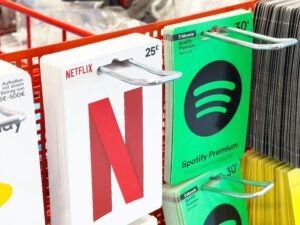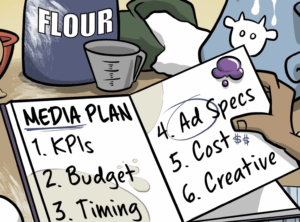 Um. I missed a little detail in my retargeting/remarketing story published earlier this month.
Um. I missed a little detail in my retargeting/remarketing story published earlier this month.
I forgot about my retargeting campaign’s “exclusions.”
My apologies to Google, Larry and everyone else who wondered why I wasn’t getting that much reach with AdExchanger.com’s ongoing retargeting campaign through AdWords.
Please allow me to explain.
As many of you know, when you retarget or remarket with an ad network or demand-side platform (or even a publisher), these solutions will offer you the ability to target above-the-fold placements only. This significantly limits your ability to scale a campaign that is already limited by the number of cookies you have in your cookie pool, but some prefer above-the-fold because:
- Brand – You want great positions on a web page in that you may think it helps reflect your brand’s quality.
- Visibility – If it’s above the fold, it’s likely that your retargeting audience will see it and act or react. If it’s below the fold, they’re going to have to scroll.
- Budget – For certain ad networks (such as Google’s AdWords) I’d say it’s cheaper to target above the fold! That’s counter-intuitive I know. But this is retargeting. If you’re low on budget and looking for max impact, the more scarce, above-the-fold inventory will actually limit your costs. CPMs, as you will see from this tiny experiment, may be the same with the below-the-fold exclusion assuming all things were equal on the Google side (same inventory levels, auction competition, etc.).
This above-the-fold targeting parameter is something I had forgotten about in Google AdWords in the original article as I had excluded below-the-fold inventory long ago.
But what do the numbers look like when “below-the-fold” is added, you ask? Onward!
Showing You The Data
First, looking back…
In seven days, from November 28 to December 4, 2010, AdExchanger.com’s website was tracking at around 35,000 monthly unique visitors. In that visitors are cookied whenever they visit AdExchanger.com, a cookie pool of around 150,000 cookies had been amassed in Google AdWords since the beginning-ish of 2010. (Read the whole retargeting story for that time period here.)
AdExchanger.com asked its retargeting tool (Google AdWords which buys display through the DoubleClick AdExchange) to retarget users using the cookie pool with frequency capping such that users would see only one ad per week max -just enough to remind people to visit AdExchanger.com for their dose of data-driven, digital ad love and “Like” us on Facebook.
The results:
- 14,255 impressions bought
- $20+ CPM bid for each impression
- Nearly 3/4 of all impressions bought were 728×90
- 89 clicks for a clickthrough rate (CTR) of .62%
- Average CPM of $6.95
- Average CPC of $1.11
- Total Spend $99.06
And then, as I said, I published the article earlier this month and realized AdExchanger.com was excluding below-the-fold impressions. Oops.
The exclusion might explain the bias toward filling 728×90 impressions since many publishers like to put a 728×90 at the top of the page.
Keep in mind that AdExchanger.com had the same 9 banners (4-728x90s and 5-300x250s) running “evenly” for both time periods. “Evenly” in this case means that the retargeter (Google) will not optimize to the best performing banner, and instead maintain an even distribution of impressions among all available banners for the campaign according to available inventory.
The Below-The-Fold Reveal
In seven days, from January 7 to January 13, 2011, and with the cookie pool now expanded to around 170,000, and monthly site traffic tracking between 35 and 40,000 monthly unique visitors, the results were as follows:
- 37,564 impressions bought
- $20+ CPM bid for each impression
- Impressions delivered were evenly split between the 728x90s and 300x250s
- 163 clicks for a clickthrough rate (CTR) of .43%
- Average CPM of $6.22
- Average CPC of $1.43
- Total Spend $233.52
As you can see, impressions delivered were about double this time as the cookie pool got a lot more coverage by adding below-the-fold placements. In fact, the weekly reach seems roughly equivalent to the site’s monthly uniques. And, 728s were no longer the predominant size being filled.
But, CTR was down by about 30% likely driven in part by below the fold placements and unseen impressions as well as user boredom with the same media over the past couple months. The cost per thousand impressions were only slightly more inexpensive averaging a $6.22 CPM.
The Takeaway
Cookie pools still degrade relatively quickly over time as January’s data showed only 20% of cookies targetable. If you want scale for your site retargeting campaign, prepare yourself for solutions such as look-alike cookie modeling which find you similar users along various audience or contextual segments. Also, using a DSP or ad network to target the cookie pool beyond a single supply source (DoubleClick Ad Exchange, in this case) is going to help.
By John Ebbert











